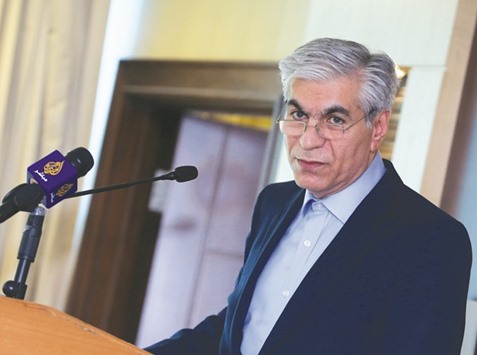Global gas demand is expected to grow faster than primary energy demand in 2015-40, the bulk of which will come from Asia, North America and Middle East, while an additional annual 100mn tonnes of liquefied natural gas (LNG) is expected to come on stream by 2017-18, Gas Exporting Countries Forum (GECF) has said.
Moreover, cumulative investments needed in the upstream and gas transportation is estimated at $8tn in 2015-40, of which only $1.7tn is associated with low-cost GECF member countries, GECF Secretary General Dr S M Hossein Adeli said, releasing the forum’s first comprehensive report on the gas sector.
Primary energy demand is set to expand 30%, while gas demand would rise by 50% to 5,200 billion cubic metre (bcm) between 2015 and 2040, he said, adding “there has been global shift in the geopolitical centre of gravity towards the Asian markets.”
Natural gas would be the largest contributor to the increase in total primary energy consumption with a share of 40%, followed by non-hydro renewables (30%) over the review period, the report, based on more than 130 countries’ energy reserves, said.
Fossil fuels would however remain the main source of energy mix with over 75% share in 2040, but down from 80% in 2015.
“Gas demand grows by 1.6% per year, stronger than growth in primary energy demand. Then gas share in primary energy mix increases from over 21% today to 25% in 2040,” Adeli said.
The bulk of additional gas demand would come from the non-OECD (Organisation for Economic Co-operation and Development) Asia, North America and Middle East, it said, adding non-OECD Asia accounts for 43% of additional demand, primarily from China and India, while North America led by the US, accounts for 19% and the Middle East 15%.
GECF said additional gas demand would come from power, transport, domestic and industry sectors. Gas use in the power sector is projected to grow 2.2% per annum, faster than global gas demand growth of 1.6%.
The share of power sector to global gas demand is expected to increase from 35% today to 41% by 2040, it said; adding the share of transport sector is slated to rise from 4% to 10% by 2040.
On the global gas supply, which amounts to 532tn cu m (of which only 33% is proven); it said a more than 50% increase (in absolute levels) in marketed production to 5,400bcm is expected during 2015-40 with unconventional gas to represent 30% against 18% at present.
“Five countries (Russia, the US, China, Iran and Australia) will represent more than two-thirds of the total incremental production during 2015-40,” it said, adding gas demand and supply remain “co-ordinated” during 2015-40, although some short periods of “disequilibrium” might occur and long term contracts act as the tool to manage the volume and price risks.
On LNG, GECF said there is a little more than 300mn tonnes of capacity that exists worldwide, most of which is in the Middle East (Qatar), Africa (Algeria and Nigeria), South East Asia (Indonesia and Malaysia) and Australasia, which is already starting to play an increasing role in Asian gas markets.
“We estimate that there is 121mn tonnes per annum (mtpa) of LNG capacity that is currently under construction corresponding to almost 40% increase in global liquefaction capacity, of which 100mtpa coming by 2017-18,” it said.
Gas trade is expected to increase by 60% to almost 1,700bcm in 2040, growing by 2.1% annually on average, and more of this trade will be carried by sea, in the form of LNG, which will grow annually by 2.8% on average in the long term. Business Page 3

Dr Adeli unveils GECF Global Gas Outlook 2040.



